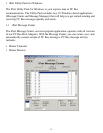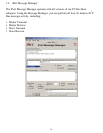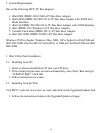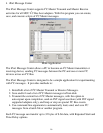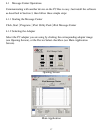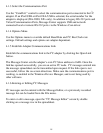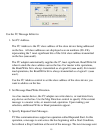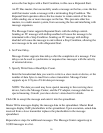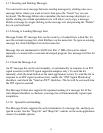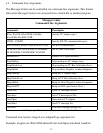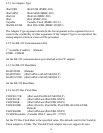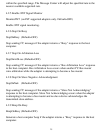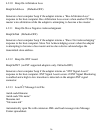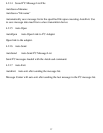20
across the bus begins with a Start Condition, in this case a Repeated Start.
An I
2
C Bus master, that successfully sends a message on the bus, owns the bus
until that master sends a message with a terminating Stop Condition. The
Repeated Start operation allows the bus master to retain control of the bus
while sending one or more messages on the bus. This prevents other bus
masters, in a multi-master system, from accessing the bus and interfering with
message sequences.
The Message Center supports Repeated Starts with the doStop control.
Sending an I
2
C message with doStop enabled will cause the message to be
terminated with a Stop Condition. Sending an I
2
C message with doStop
disabled will cause the message to end without a Stop Condition, allowing the
next message to be sent with a Repeated Start.
4. Set Time Delay.
Message Center supports time delays after the completion of a message. Time
delays can be used to synchronize or sequence bus messages with the activity
of external devices.
5. Specify Write Data or Read Byte Count.
Enter the hexadecimal data you want to write to a slave receiver device, or the
number of data bytes to read from a slave transmitter. Message Center
supports up to 32 bytes of 8-bit data per message.
NOTE: The data you send may have special meaning to the receiving slave
device, but to the Message Center, and the I
2
C adapter, message data has no
special meaning. Consult your slave device’s data sheet for details.
Click OK to accept the message and enter it into the spreadsheet.
Master Write messages display the message data in the spreadsheet. Master Read
messages display 0xFF placeholders in the spreadsheet. Upon execution, actual data
received from a slave transmitter replaces the placeholders in the message
spreadsheet.
Repeat above steps for additional messages. The Message Center supports up to
32,000 messages in a list.




